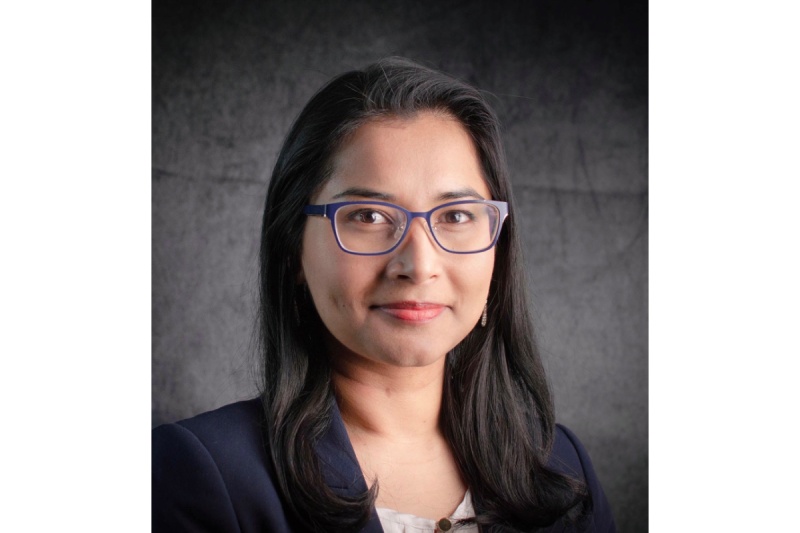Health
Navigating the Complex Path of Reconstructive Surgery After Gunshot Facial Traumas

Facial trauma reconstruction is often complex. But few operations are as complicated and emotionally taxing as those involving gunshot wounds to the face.
These injuries not only cause significant physical damage but also deeply affect the emotional and psychological well-being of patients.
“When treating these kinds of injuries you have to consider the impact it has had on a multitude of levels,” says Dr Ramya Bharathi, an Ear Nose and Throat surgeon with a profound interest in facial trauma reconstruction.
“Of course, the primary focus when a patient with a gunshot facial trauma is brought into the emergency room is stabilizing their condition,” she adds.
“But as their surgeon, you are thinking about how they are going to cope with what they have been through and the aftermath from a mental perspective. How best can you advise them.”
Gunshot facial injuries often involve significant blood loss and can pose an immediate threat to life: “My role in these critical first hours is to collaborate with a team of specialists to manage these life-threatening issues before considering reconstructive options,” says Dr Bharathi.
“Once the patient is stable, the next step is to assess the extent of the damage.”
Gunshot wounds to the face can cause a range of injuries, from shattered bones and damaged soft tissues to disfigurement and functional impairments.
However, advanced imaging techniques, such as CT scans, are invaluable in this phase, helping us to understand the full scope of the injuries.
The next steps involve the reconstructive surgery itself: “When the injury is gunshot facial trauma, it’s rarely a single procedure,” says Dr Bharathi.
“It’s a multistage process that can span months or even years.”
The first surgeries are typically focused on repairing the most critical damage. This might involve reconstructing the jawbone, repairing damaged nerves, or addressing other essential structures.
Dr Bharathi adds that advances in reconstructive surgery have significantly improved outcomes for patients with gunshot facial traumas: “Techniques like microvascular surgery involving transplanting tissue, bone, or muscle from other body parts have been revolutionary,” she says.
Additionally, 3D printing technology is now used to create custom implants and grafts that match the patient’s anatomy, enhancing functional and aesthetic outcomes.
Once the primary reconstructive surgeries are complete and the patient’s health is stable, it is time to consider cosmetic procedures.
These procedures are not merely about aesthetics; they are crucial for restoring the patient’s self-esteem and helping them reintegrate into their social and professional lives.
“This is when a patient can really start to address what has happened to them from a mental perspective,” says Dr Bharathi.
“Cosmetic procedures can help them feel like they can get back to a way they want to look.”
The next step is physical rehabilitation, which is another essential part of the recovery process. Patients often require speech therapy, physiotherapy, and sometimes occupational therapy, depending on the extent of their injuries: “My role extends beyond surgery to coordinating this multidisciplinary care, ensuring a holistic approach to recovery,” says Dr Bharathi.
The psychological impact of suffering a gunshot wound to the face cannot be overstated. Patients often experience a range of emotions, from depression and anxiety to PTSD.
Providing mental health support is as important as physical treatments: “In my practice, I work closely with psychologists and counselors who specialize in helping trauma patients, says Dr Bharathi.
“We all work closely to give the best support possible.”
As well as a network of health professionals, having the support of family and friends is crucial in the recovery journey.
Dr Bharathi says: “As a surgeon, I also find myself in the role of a counselor, not just for the patients but also for their loved ones. They are all dealing with the fallout from a life-changing event. I see it as a privilege to help guide them on how they can best support the patient through this challenging time.”
Each patient’s journey through recovery and reconstruction is unique.
“The challenges are manifold as a surgeon, but the rewards are immeasurable,” says Dr Bharathi. “Seeing patients regain their confidence and resume their lives is profoundly gratifying and a constant reminder of why I chose this speciality.”
Reconstructive surgery after gunshot facial traumas is a journey of resilience and perseverance, both for the patient and the surgical team. It blends cutting-edge medical science with compassionate, patient-centered care. As challenging as these cases are, they underscore modern medicine’s incredible ability to save lives and restore them.
About Dr Ramya Bharathi
Dr Ramya Bharathi is a highly skilled Resident Physician in the Department of Otolaryngology at Tufts Medical Center in Boston, MA.
Her academic excellence is evident from her time at Saint Louis University School of Medicine, where she earned her Doctor of Medicine degree and graduated with Distinction in Research.
This achievement earned her the Distinction in Research Award and the Gorowny O. Broun Award in Internal Medicine, highlighting her exceptional academic capabilities.
Before her medical studies, Dr Bharathi attended the College of New Rochelle, where her undergraduate education was distinguished by graduating with Honors and Magna Cum Laude. Her academic journey set a strong foundation for a career marked by notable achievements and recognition.
Among her many accolades, Dr Bharathi has been honored with the Medtronic Sinus Dissection Course Grant and the Triological Society Travel Award, showcasing her commitment to excellence in her speciality.
She has contributed significantly to the department since joining Tufts Medical Center in 2019. Additionally, her professional background includes a role as a Research Assistant at the University of Toronto, further solidifying her experience in the medical field.
Dr Bharathi is an active member of several esteemed professional societies, including the Massachusetts Society of Otolaryngology and the American Academy of Otolaryngology–Head and Neck Surgery. Her scholarly contributions to the field of otolaryngology are substantial, with 10 peer-reviewed publications and participation in seven presentations.
Notably, her work includes presentations on the comparison of mechanical force used in different tracheotomy techniques and studies on the fluid dynamics of the nasal cavity, underlining her diverse expertise and active engagement in advancing medical knowledge.
Dr Bharathi’s extensive research and active involvement in academic forums reflect her deep commitment to her specialty and her continuous pursuit of excellence in otolaryngology.
-

 Sports4 weeks ago
Sports4 weeks agoAl Ahly vs Inter Miami, 2025 FIFA Club World Cup – Preview, Prediction, Predicted Lineups and How to Watch
-
Health3 weeks ago
Back to Roots: Ayurveda Offers Natural Cure for Common Hair Woes
-

 Tech3 weeks ago
Tech3 weeks agoFrom Soil to Silicon: The Rise of Agriculture AI and Drone Innovations in 2025
-

 Startup4 weeks ago
Startup4 weeks agoHow Instagram Is Driving Global Social Media Marketing Trends
-

 Science5 days ago
Science5 days agoJuly Full Moon 2025: Everything You Should Need to Know, When and Where to See Buck Moon
-

 Sports3 weeks ago
Sports3 weeks agoFIBA 3×3 World Cup 2025: Full Schedule, Preview, and How to Watch
-

 Gadget3 weeks ago
Gadget3 weeks agoThings to Know about Samsung Galaxy S26: What’s New and What’s Next
-

 Sports4 weeks ago
Sports4 weeks agoWorld Judo Championships 2025: Full Schedule, Date, Time, Key Athletes and How to Watch















